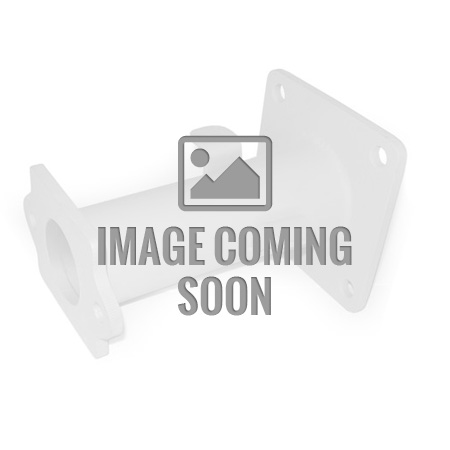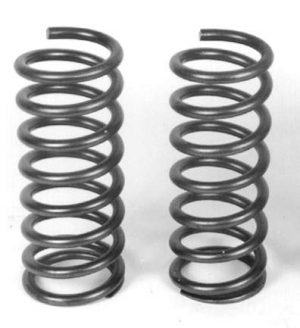Description
Rear Shock Kit for 1937-1939 Chevy (Gas Shocks)
Kit Includes:
Upper shockbar
2 gas shock absorbers
2 lower shock mounts
Hardware
Instructions
Note: Not for use with stock springs.
AR-1040G 1937-1939 Chevy Rear Shock Kit
Please note that because these are usually installed together, the installation instructions below include those of the AS-1018C Leaf Spring Rear End Kit, which available separately. Those parts are not included with the AR-1040G.
Rear End Mounting Kit:
1. Remove original rear end, springs and shocks. Remove original spring mounts and rivets.
2. Clamp new front spring mounts to frame. Match line up holes shown for year of frame with original spring mount holes.
The tab goes forward and to the center of the frame.
Note that Chevrolet did not always match these patterns, so at this point check to make sure your wheels are in the center of the fender opening.
Do this by installing springs in front mounts and clamping rear end to the springs. (be sure car is safely supported by jack stands).
Install wheels and tires and visually check for centering. If needed make adjustments to the front mounts now.
DO NOT SKIP THIS STEP, there are a lot of rear end differences for these years. Install front inner line up bolt only for now.
3. Bolt new rear mounts to frame. 1937-38 only use original spring bracket holes for line up.
Drill rivet holes out to 3/8” and install bolts.
Note 1939 will not have rivet holes for line up. In this case, go to front mount and measure back 47 1/2” to find mounting point.
4. Bolt springs in place. Front uses stock bushing. Rear is empty to accept shackle.
Install shackles.
Now go back and drill the front mount holes and bolt mounts solidly to frame. (this step can be done whenever you are sure the front and rear mounts are in alignment).
Rear Shock Kit:
5. Clamp upper shock mount to frame in location shown. Tube goes between frame rails, not below. The floor pan has a tendency to sag in this area, so avoid rattles, be sure the floor pan doesn’t touch the shock bar. Use a 38” measurement as a starting point only. Clamp shock bar in place and check clearances before drilling. Drill frame to 3/8” and bolt upper mount in place.
6. The spring retainer can be used with shock angled up (for normal kit use) or angled down (for low riders). Spring retainer is installed with shock absorber stud toward the center and pointing forward.
To Complete:
7. Install stock rubber spring pads in rear end (Nova only) and set rear end in place over spring bolt. Install bottom rubber spring pad (Nova only) and lower spring retainer.
Note: springs have a spacer installed on the spring center bolt. This is needed for Nova type rear ends only. If it interferes on other rear ends, it can be removed.
8. Slip U bolts over axle and bolt unit together. Install shock absorbers and tighten all bolts.
9. Now go back and check for loose bolts, pieces fitting right, parts rubbing on other parts, and give everything a general overview for correct operation. Be sure car
bottoms out on a rebound rubber and not on the shocks. If car bottoms out on the shocks, they sooner or later will break. Rebound rubber installation is the responsibility of the installer.
Note on springs:
New springs will normally drop up to an inch in the first 500 miles of use.
Depending on the weight of the car, new springs can have a slight arch, sit flat or be slightly reversed. This is normal. The spring is acting just like it should.
Also parallel leaf springs are almost never perfectly parallel. It is just a name for this type of suspension. Detroit has used these parameters for springs in many different models. These concepts are well proven and will produce no problems whatsoever.
We do not recommend hard bushings of any kind for springs. Rubber bushings will absorb vibrations and road noise and allow for some flexing, an ideal combination here.
![]() WARNING: This product can expose you to chemicals including nickel and urethane, which are known to the State of California to cause cancer and birth defects or other reproductive harm. For more information go to www.P65Warnings.ca.gov.
WARNING: This product can expose you to chemicals including nickel and urethane, which are known to the State of California to cause cancer and birth defects or other reproductive harm. For more information go to www.P65Warnings.ca.gov.






Reviews
There are no reviews yet.